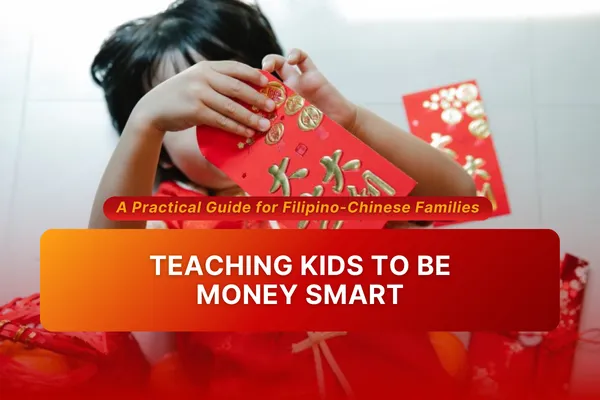
Teaching Kids to Be Money Smart
A-thay called my son… “Connor! Di lai tsia (come here)”
She handed to my son ang pao for Chinese New Year.
“To sia (thank you), A-thay!”, Connor replied and immediately gave this ang pao to me. Automatic na sa kanya na I should handle the money.
As a Cash Flow Certainty Coach for the past 17 years, I realized this culture/tradition of taking over the ang pao of our kids is not helpful to the kids in the future.
With this habit, we are teaching them to be dependent on their parents, depriving them of the things they want to buy (diba the ang pao is meant for the kids to enjoy?) and letting them know that we do not trust them in terms of handling money.
So here I am, I want to help you take this opportune time to start teaching your kids the habit of being money smart.
It’s a habit that will be useful as they move through life.
I’ll share with you three simple tips.
TIP # 1. Gift ang pao according to what you can afford.

Be a good example, your kids are just copying your actions, the way you speak and also the way you spend and save. They can learn from your budgeting habits. Give what you can. After all, ang pao’s are given as a symbolic gift for luck — jitde yisi as we say in Chinese.
It’s important to have a rough estimate of how much money the parent will allow their child to receive from you as the giver. That way, we can avoid making a scene where you give too big an amount, and the parent will have to take away the ang pao.
Another way to do it is to give the ang pao directly to the parent and just tell them that it’s a gift for their child’s savings. Then you can speak some nuggets of wisdom to the child about the importance of saving money.
TIP # 2. Teach your kids money smarts.

If you can do this long before Chinese New Year, all the better!
Talk to them about the basics:
How money is generated.
In their case, it’s special occasions. Or if you “pay” them for certain tasks, then that’s another way.
How saving can benefit them.
For example, saving for a special toy instead of just buying it for them. Saving teaches them the value of money and patience. They get to learn that money is hard-earned and so should be spent wisely.
The importance of having a budget.
Depending on your child’s maturity, you can tell them about the cost of daily living: utilities, food, transportation money, etc. Speak to them like an adult. Show them how all of these add up to a certain amount which the family needs to set aside on a monthly basis.
In my Facebook community called AngPao for Life, https://www.facebook.com/groups/angpaoforlife
imparting money wisdom to kids is part of the program. Kaya joining my program means that not only will you learn how and where to invest your earnings, your child will also acquire a money-smart mindset.
Join us here for FREE.

Start them young, ika nga. Yes, possible ito!
TIP # 3. Guide kids on how to manage their Ang Pao’s.

This is a practical application of Tip 2. For me, the easiest way to do this is to use the 3-jar Money Management System.
If you have older kids to teens, you can use more than 3 jars or use the envelope system depending on what they plan to do with their money. We will discuss this in our future article.
For simplicity, tignan natin for now ang 3-jar System.
You will label these jars this way: SAVE, SPEND, GIVE.
Divide equally their ang pao money and “deposit” into each jar.
Each time they receive ang pao, just repeat the process.
Anyway, if you are not familiar with this yet, here are the functions of each jar.
SPEND jar:
This is the amount to be used for the wish list of the kid. Like if they want a bicycle, a special treat, or a book. Bring them along to check the price. Mag canvas na din kung applicable. Then let them know that they need to grow their money to the amount they need before they can buy. They get a chance to learn that they need patience and it takes effort for money to grow.
SAVE jar:
Ito naman, is to teach them that in life, merong highs and lows. They can see the advantage of having a “save jar” (aka savings) during financially low times. Tell them how having savings can help tide the family over during low times. It’s also a lesson about preparedness and resilience.
GIVE jar:
Here, we teach your child that there is a time to share as well, and this includes our financial blessings. Pwede kayo mag select ng charity or foundation and involve your child when turning over the donation. Syempre, we want our kids to have well-formed character din, di ba?
So ayan, 3 simple, actionable tips to help your family in managing the funds as they receive their Ang Paos.
Here’s to an abundant, healthy, happy 2024 and a matching happy marriage with your spouses and with a happy relationship with your kids!
Please note,
The views in the article /blog are personal and that of the author. The idea is to create awareness and not intended to provide any product recommendations.
